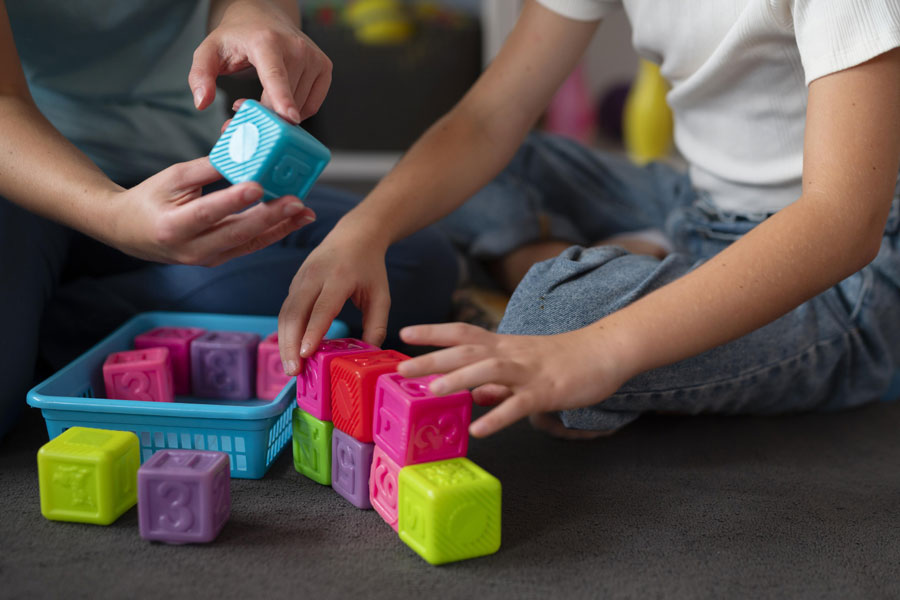How does Cognitive Behaviour Therapy work?
In Cognitive Behaviour Therapy, problems are addressed in a systematic manner over a certain number of sessions. Depending on the child and the specific goals, it may take as few as six sessions or as many as twenty or more. If you are looking for the best Cognitive Behaviour Therapy Sydney, ANJ Therapy is just a call away.
CBT for children offers real-world, everyday uses. Your youngster can learn how to identify their negative thinking patterns and how to change them for more constructive ones with the aid of this therapy. A youngster can learn how to behave differently and ameliorate stressful situations rather than make them worse by learning fresh perspectives.
ABC model of Cognitive Behaviour Therapy
- A – Adversity or a trigger.
- B – Your beliefs on what happened. It involves both overt and covert beliefs about events, oneself, and other people.
- C – Consequences, such as your emotional or behavioral reaction.
B is thought to connect A and C. B is also regarded as being the most crucial element. This is so that CBT may concentrate on altering beliefs (B) to bring about greater beneficial effects (C). Your therapist will assist you in exploring the relationship between B and C while using the ABC approach. They’ll concentrate on your behavioral or emotional responses and any underlying instinctive assumptions. Then, your therapist will assist you in rethinking these assumptions.
Over time, you’ll develop the ability to identify more possible beliefs (B) regarding negative experiences (A). This leads to healthier consequences (C).
Why ANJ Therapy for Cognitive Behaviour Therapy in Sydney?
ANJ Therapy Sydney is one of the best if you are looking for Cognitive Behaviour Therapy in Sydney. We have a result-oriented approach and we offer therapy with a very friendly approach. Some of the methods of Cognitive Behaviour Therapy we employ are:
- Play therapy: The children can address issues and come up with solutions with the use of arts and crafts, dolls and puppets, or role-playing. Additionally, it may keep younger kids interested.
- Modeling: The therapist may illustrate the desired behavior by acting it out in front of the kid, for instance, by acting out how to deal with a bully.
- Restructuring: Using this method, a youngster can learn how to transform bad thinking into a positive one. For instance, “I’m terrible at soccer. I’m not the best soccer player, but I’m good at a lot of other things, which can be substituted with “I’m a terrible loser.”
- Exposure: Slowly introduce the youngster to the things that trigger their anxiety.
Types of Cognitive Behaviour Therapy
Individual CBT: Individual cognitive behavioral therapy provides the kid or teenager with the skills necessary to overcome his or her obstacles. It is completely focused on the child or adolescent and involves one therapist. This kind of CBT has been shown to be successful in treating teenage drug misuse as well as childhood depression and anxiety disorders.
Group CBT: In group cognitive behavioral therapy, in addition to the child or adolescent and the therapist, additional people who are not members of the kid or teenager’s social groups participate in the therapy sessions. People in group treatment are frequently coping with comparable behavioral problems, and unlike individual CBT, the group structure allows for the development of useful relationships in addition to gaining the necessary skills to alter behavior.
Parent-Child CBT: Research has demonstrated that cognitive behavioral therapy is beneficial in treating anxiety problems in children and adolescents, especially when parents are involved in the therapeutic process. Particularly beneficial is CBT which teaches parents methods for caring for nervous children, including psychoeducation, individual therapy, carer coping, and parent training methods. In this, the parents are trained to work with their children and are directly involved in their care.
CBT and Medicine: Research has indicated that treating a child’s or adolescent’s anxiety symptoms or depression with cognitive behavioral therapy and psychotropic drugs can be successful. If a member of a child’s care team determines that medicine is required for your child’s therapy, they will be able to prescribe the appropriate dosage.
Trauma-specific CBT: To assist children and adolescents who have experienced trauma, trauma-focused cognitive behavioral therapy was created. Although it is most successful in treating PTSD, it also works well in treating other trauma-related diseases. It is administered similarly to cognitive behavioral therapy, often over a short period of time (six to twenty sessions), with the kid and parents present. A trauma-focused CBT session addresses a number of issues connected to the child’s traumatic experiences, such as behavioral and cognitive problems, depression or anxiety symptoms, and aids in the development of parenting skills and parent-child interactions to support and cope with the struggles of the child.
Motivational Enhancement Therapy combined with CBT (MET): Teenagers who get motivational enhancement treatment (MET), a sort of evidence-based therapy, are intrinsically motivated to alter their behavior. It is successful at modifying an adolescent’s behavior toward drug and alcohol misuse when MET is combined with group-based CBT. In order to assist the young person to develop a strategy to alter his or her behavior and inspire the young person to follow through, this treatment makes use of dialogue, coping mechanisms, and motivational interviewing techniques. The therapist will walk the young person through their strategy for quitting drugs throughout sessions and will keep them motivated and supportive of their advancement. For the best outcomes, the teenager would take part in group-based CBT after MET treatment sessions.

